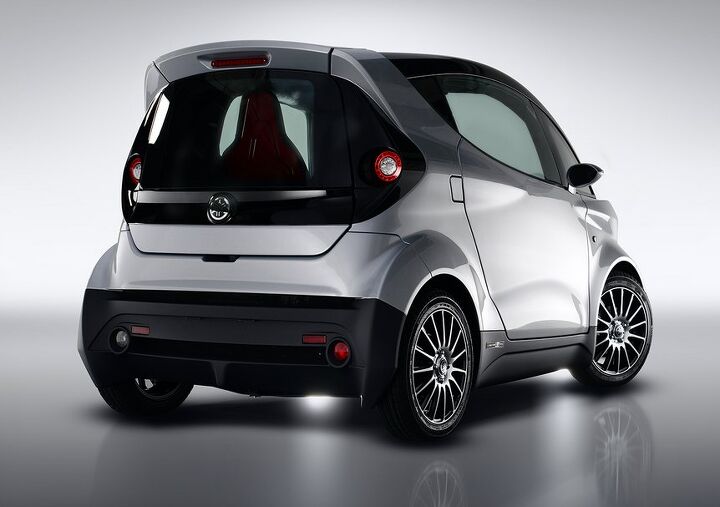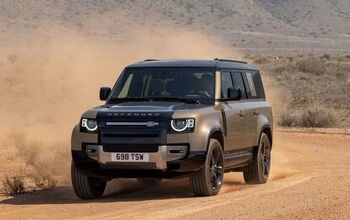Yamaha to Likely Build the Motiv, Based on Gordon Murray's City Car, Using Murray's IStream Assembly Process

With most of the new cars and concepts leaked weeks ago there hasn’t been much real breaking news from the Tokyo Motor Show, so it was a bit of a surprise that Yamaha announced that it will be the first automotive manufacturer to embrace master automotive designer Gordon Murray’s revolutionary iStream assembly process and that it will use the iStream process to build a lightweight two-seat city car called the Yamaha Motiv. The Motiv, based on Murray’s T25 and T27 concepts, will be available in both gasoline and electric versions and targeted at the European market.
The project still needs to be approved for production by the Yamaha conglomerate’s main board of directors, but it has been fully engineered for mass assembly. Gordon Murray Design and Yamaha first began discussing a possible project five years ago but the worldwide recession put it on the shelf until 2011, when they started to jointly develop the Motiv.
“Forming a partnership with Yamaha is a dream for us,” said Gordon Murray, who started developing the iStream concept of building cars more than a decade ago. “Yamaha has completely embraced the principles of iStream, and could not be a more ideal partner. They have huge technical resources, but their team on this project has been tightly-knit, very skilled and very quick-acting.”
The main concept of iStream is to abandon the traditional stamped metal, spot welded construction, used almost universally by the auto industry for more than 60 years, and replace it with one based on relatively simple tubular steel frames reinforced with sheets of composites that make up the floor, firewall, bulkheads and roof structure. The outer skin is made from non load bearing impact resistant plastic. Murray claims class-leading stiffness and crashworthiness.
The Motiv is about the same size as one of Daimler’s Smart cars, about two inches narrower and lower, with the same 2,690 mm length, but it’s about 100 kg (220 lb) lighter.
Unlike the three seat layout with a central driving position similar to Murray’s superlative McLaren F1, Yamaha decided to make the Motiv a two seater, using Murray patented thin shell composite seats. The instrument panel and controls are said to reflect Yamaha’s musical instrument and audio equipment heritage.
The Motiv is a midengine design with the compact powertrain mounted low in the car, in front of the rear axle. Another GMD concept, iLink, a simple strut-type independent rear suspension system, is used, an improvement over the beam axles typically found in city cars. The EV version, labled the Motiv-e, uses drivetrain components by Zytec including a 33 hp electric motor, while the gasoline version will use a 1 liter three cylinder engine, purpose designed for the Motiv by Yamaha, driving the rear wheels through a 6 speed DCT.
The Motiv-e will have a top speed of 65 mph and a 0-60 mph time of 15 seconds, intended to be exclusively used in the city. With 70 to 80 hp on tap, the combustion powered Motiv will be a bit quicker. With a power to weight ratio of about 100 horsepower per ton, 0-60 times should be under 10 seconds with a highway capable top speed of 100 mph. No estimated mileage or range figures have been released.
It’s possible that enthusiasts may embrace the Motiv. Low weight, midengine layout, a stiff chassis, a low center of gravity and all four wheels independently suspended, not to mention Murray’s reputation as one of the premier sports car designers of all time, means that the the gasoline Motiv may have more than just pretensions when it comes to sporty driving.
While officially it’s just a concept to test public reaction, Autocar reports that if the Motiv is greenlighted by the Yamaha board, a new factory for using the iStream process could be built and the car could be ready for sale by 2016. No prices have been quoted but Yamaha and GMD say that the Motiv has been designed as a “semi-premium” product so it will likely be priced similarly to the Smart, about £8000-£12,000 (~$12,900-$19,350). Murray says that the iSTreem process can support an annual output of up to 200,000 cars.
Nothing is guaranteed, but Murray is optimistic that the Motiv will see production. “This is Yamaha’s car, not ours,” he says, “and it is up to them to decide whether it goes into production. But they’re fabulous partners, and we are very optimistic for the car’s prospects.”
Ronnie Schreiber edits Cars In Depth, a realistic perspective on cars & car culture and the original 3D car site. If you found this post worthwhile, you can get a parallax view at Cars In Depth. If the 3D thing freaks you out, don’t worry, all the photo and video players in use at the site have mono options. Thanks for reading – RJS

Ronnie Schreiber edits Cars In Depth, the original 3D car site.
More by Ronnie Schreiber
Latest Car Reviews
Read moreLatest Product Reviews
Read moreRecent Comments
- C-b65792653 I'm starting to wonder about Elon....again!!I see a parallel with Henry Ford who was the wealthiest industrialist at one time. Henry went off on a tangent with the peace ship for WWI, Ford TriMotor, invasive social engineering, etc. Once the economy went bad, the focus fell back to cars. Elon became one of the wealthiest industrialist in the 21st century. Then he went off with the space venture, boring holes in the ground venture, "X" (formerly Twitter), etc, etc, etc. Once Tesla hit a plateau and he realized his EVs were a commodity, he too is focused on his primary money making machine. Yet, I feel Elon is over reacting. Down sizing is the nature of the beast in the auto industry; you can't get around that. But hacking the Super Charger division is like cutting off your own leg. IIRC, GM and Ford were scheduled to sign on to the exclusive Tesla charging format. That would have doubled or tripled his charging opportunity. I wonder what those at the Renaissance Center and the Glass House are thinking now. As alluded to, there's blood in the water and other charging companies will fill the void. I believe other nations have standardized EV charging (EU & China). Elon had the chance to have his charging system as the default in North America. Now, he's dropped the ball. He's lost considerable influence on what the standardized format will eventually be. Tremendous opportunity lost. 🚗🚗🚗
- Tassos I never used winter tires, and the last two decades I am driving almost only rear wheel drive cars, half of them in MI. I always bought all season tires for them, but the diff between touring and non touring flavors never came up. Does it make even the smallest bit of difference? (I will not read the lengthy article because I believe it does not).
- Lou_BC ???
- Lou_BC Mustang sedan? 4 doors? A quarterhorse?Ford nomenclature will become:F Series - Pickups Raptor - performance division Bronco - 4x4 SUV/CUVExplorer - police fleetsMustang- cars
- Ede65792611 Got one. It was my Dad's and now has 132K on it. I pay my Mercedes guy zillions of dollars to keep it going. But, I do, and he does and it's an excellent vehicle. I've put in the full Android panel for BT handsfree and streaming with a backup cam.






































Comments
Join the conversation
If they put something resembling a real transmission in it, that would be something that the Smart and the Scion iQ didn't. I'd hope that a motorcycle manufacturer could figure it out, but I've been let down before.
One may wonder what happened to Murray's striking three-passenger car that was supposed to outsmart Daimler's ForTwo and that was meant to use interstates in a split-lane configuration... Simplified production, blue-printable for localized manufacturing all over the planet, is the "way to go" though.